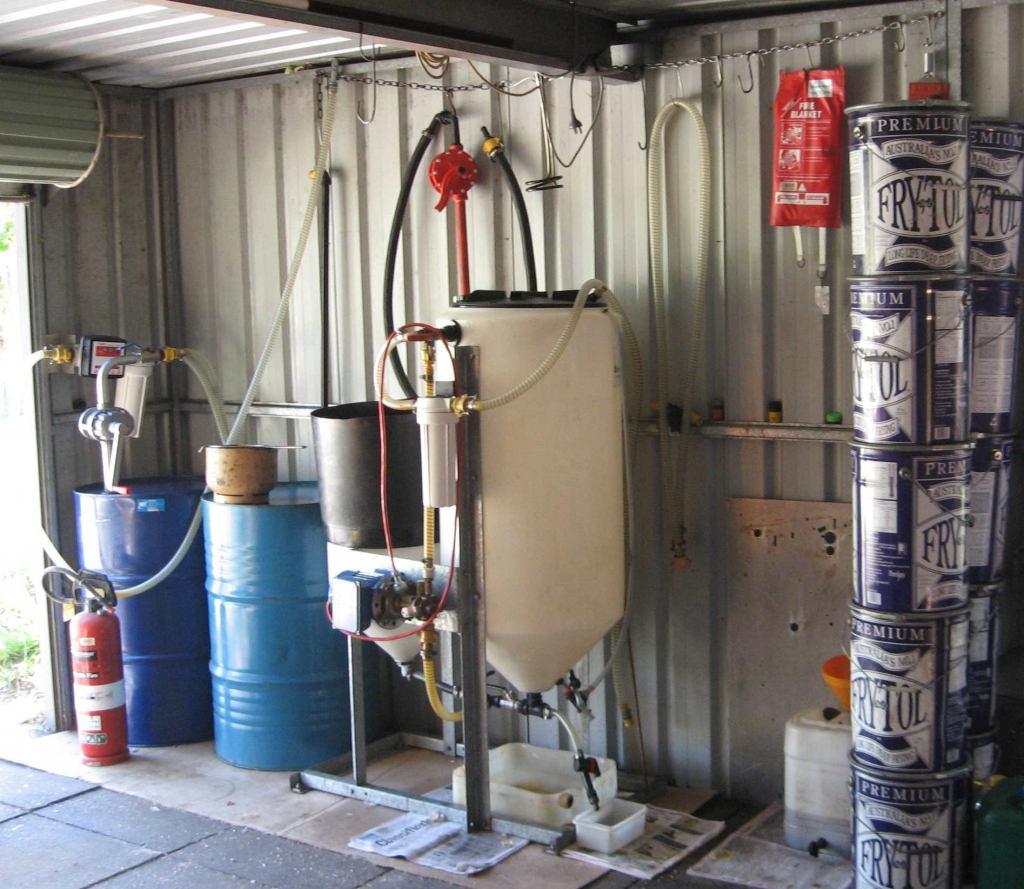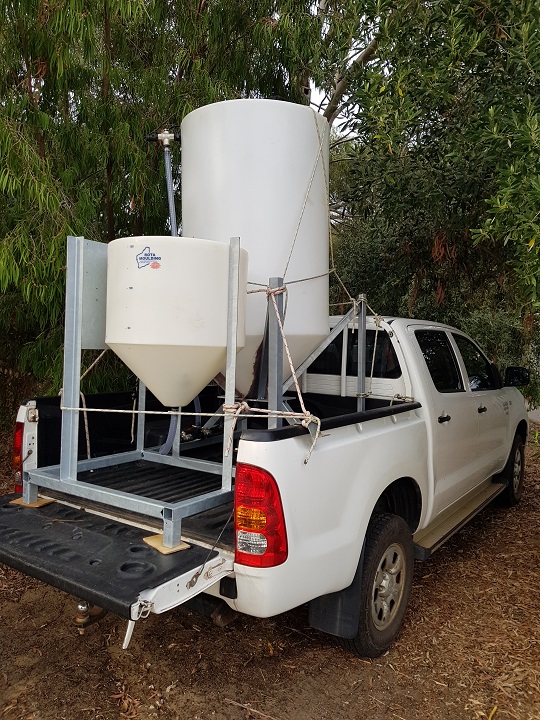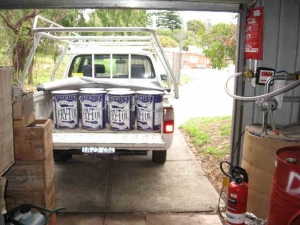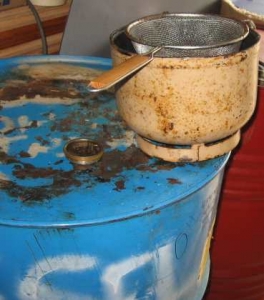Jonathon Thwaites’ Biodiesel home manufacturing set up 150 litre batching, 500 litre below


Jonathon Thwaites’ Biodiesel home manufacturing set up
Disclaimer
Anything I say, do or write is likely to be completely erroneous. Oil companies, multinationals and the media owners have a monopoly on correct information. I take no responsibility, nor guarantee the correctness of anything on this page or web site and in fact you should treat it all as a load of rubbish.
This page is intended to help individuals establish a licensed manufacturing facility in their shed.
In February March 2006 I set up my facility for making biodiesel in my shed in suburban Perth. The facility has been licensed with the Australian Taxation Office (ATO) for the purposes of manufacture of an excisable fuel. Permission has been obtained from my local council health inspector to operate and I have complied with relevant regulations for holding various flammable and combustible materials.
A log of fuel manufactured is maintained and fuel dispensed to my car is metered for the ATO. I am required to provide an annual return for my production and pay 38.2 c tax on my production. This can be claimed back under the Cleaner Fuels Grant Scheme (CFGS) operated by the Department of Environment and Heritage. To do this you must have your fuel tested for compliance with the relevant Australian Standard.
Copies of documentation are downloadable as pdf files below:
Applications:
Local council request for approval letter
ATO request for license letter
The following three forms should be obtained from the ATO with a kit of information to help you in the process. I talked to:
EXCISE – FUEL & ENERGY GROUP
ATO
Ph: (03) 9285 – 1260
ATO Application for a licence to manufacture petroleum form
ATO Application for excise registration – petroleum form
ATO Consent to obtain information – individual form
Approvals obtained:
ATO Permission – Periodic Settlement Permission (PSP)
ATO Permission letter
ATO Issue of excise manufacture licence letter
ATO Manufacture Licence
ATO Annual return forms:
ATO Excise return form
ATO information sheets:
nat9883-04-2004About Biodiesel
nat9884-04-2004About Cleaner Fuels Grants
nat9885-04-2004Meeting Biodiesel Obligations
nat9886-04-2004Cleaner Fuels Grant
Pictures of the facility Jonathon Thwaites’ facility
The reactor equipment is a Biomaster – I make them – Bioworks have stopped making them. They make the process much safer than the typical backyard kit, streamlining it so it can be carried efficiently and with minimum trouble. I have decided to start making them (about $2,500) so email me if you want one. jonathon.thwaites@uwa.edu.au
Or go to :http://medicalandscientificservices.com.au/?page_id=98
It takes about 20 minutes to carry out the reaction, i.e. – sieve oil into 200 l drum, pump it into reactor, titrate it, measure out KOH and dissolve it in methanol and pump it into the reactor. I leave the pump circulating the oil and methanol/KOH mix for approximately 1 hour to get good mixing, and then return to turn the pump off. 24 hours later the biodiesel will be floating on top of the glycerine. The glycerine can be drained off the bottom.
For example 100 litres of oil will require approximately 20 litres of methanol with approximately 800 grams of KOH dissolved in it. These quantities must be determined in the titration and measured – not guessed. You will end up with 100 litre of biodiesel and about 20 litres of glycerine. I carry out 2 water washes (about 10 to 15 mins of my time each). So 100 litres of oil gives you 100 litres of biodiesel usually.
The total process probably takes about 2 hours but over about 2 days.
The cost of production (not including my time) is about 25 to 30 c per litre. I run my Hilux diesel ute on B100 100% biodiesel – and contrary to a lot of reports I have read it has not destroyed my car yet – maybe this will happen some time but it seems to be working fine – maybe even better.
Bioworks runs training courses as well as the ones I run at University of Western Australia – I think it is a very good idea (and strongly recommend) that you go to a training course as they cover a lot of the technical details of getting it right and also importantly safety. Note I have the correct fire extinguisher, fire blanket, limit my holdings of materials and always have the shed roller door open for good ventilation when working. I use proper fuel hoses for the methanol (electrically conducting and earthed rubber) and the pump motor is approved for flammable materials.



